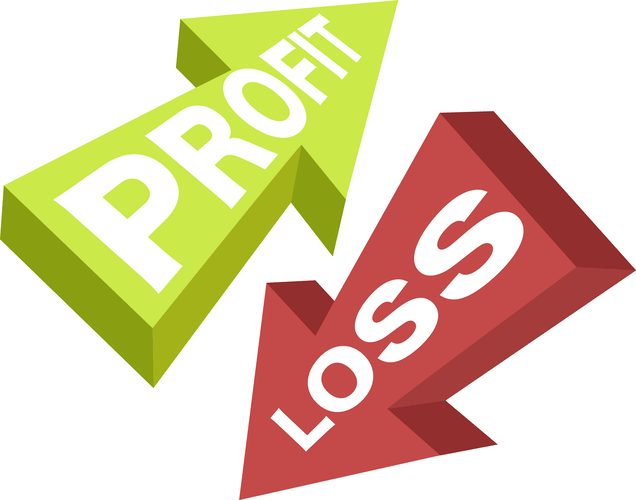Inventory Bookkeeping Mastery: Track Stock, COGS & Cash Flow Step-by-Step Guide

Inventory accounting is a critical aspect of business operations beyond mere stock-keeping. Inventory is a current asset because it converts to revenue within a short time frame, typically within a year. The transition from an asset to an expense – Cost of Goods Sold (COGS) occurs after a sale.

InFlow Inventory Price
Once consumed, you transfer their cost to work-in-progress or expense it directly as part of the Cost of Goods Sold (COGS). Company management, analysts, and investors can use a company’s inventory turnover to determine how many times it sells its products over a certain period of time. Inventory turnover can indicate whether a company has too much or too little inventory on hand. One of the most common problems of inventory management is inconsistent tracking. The lack of control fails to give you the full picture of inventory levels, leading to problems such as overstocking or stockouts.
Stock Types and Their Impact on Accounting

Because of this, inventory accounting plays a critical role in maintaining the profitability and liquidity of any product-based business. It breaks down the essential terms, methodologies and best practices that ensure accurate accounting for inventory. However, CARES Act the US Internal Revenue Service requires that if a company uses LIFO for tax purposes, it must also use LIFO for reporting purposes.
- Inventory accounting is a critical component of financial management for companies that make or sell tangible goods.
- You can have the best inventory systems in place, but they’re only effective if your team understands how to use them.
- Consignment inventory is the inventory owned by the supplier/producer (generally a wholesaler) but held by a customer (generally a retailer).
- Manufacturing businesses routinely purchase raw materials such as wood, chemicals, metals, etc., that they use to manufacture a product.
- The first 50 necklaces sold would be assigned the cost of $30, while the following 100 necklaces sold would be priced at $25.
Inventory Accounting
We focus on financial statement reporting and do not discuss how that differs from income tax reporting. Therefore, you should always consult with accounting and tax professionals for assistance with your specific circumstances. The gross profit method for estimating https://www.bookstime.com/articles/cash-flows-from-operating-activities the cost of the ending inventory uses information from a previously issued income statement. To illustrate the gross profit method we will assume that ABC Company needs to estimate the cost of its ending inventory on June 30, 2024. With perpetual FIFO, the first (or oldest) costs are the first costs removed from the Inventory account and debited to the Cost of Goods Sold account.

These items have not yet been received and, therefore, have not been added to the inventory. You can include transit inventory in the buyer’s financial statements, depending on the terms of the sale. These are the direct costs incurred to obtain inventory, including the purchase price, shipping, and taxes. While acquisition costs may seem straightforward, understanding the full scope of these expenses is essential for determining the true cost of inventory. One way to track the performance of a business is the speed of its inventory turnover. When a business sells inventory at a faster rate than its competitors, it incurs lower holding costs and decreased opportunity costs.
- Determining the monetary value of inventory on hand is essential for accurate financial reporting.
- Of course, the retail inventory method works best when the markup is consistent across all products.
- If you sell inventory and record an accounts receivable, you must use an accounts receivable object code.
- FIFO inventory accounting presumes the earliest-received stock will sell first.
- Inventory is not just a static asset but a dynamic element that influences the overall efficiency and success of a company’s operations.
Each method has its advantages and considerations, such as the impact on profitability, tax obligations, and inventory turnover. Choosing the right method is crucial for accurate financial reporting and decision-making. Managing inventory effectively is crucial for accurate financial reporting and business operations. The choice of inventory accounting method can significantly impact a company’s cost of goods sold and overall profitability. Stock discrepancies occur when recorded inventory levels don’t match the actual physical count. These discrepancies often result from theft, damage, human error, or miscounting during stock audits.
Inventory Management in Manufacturing
Although Excel is a powerful business analysis tool, it can be error prone and is time consuming to use. Let’s put the COGS formula into practice, since this is an especially inventory bookkeeping important part of the inventory accounting process. Chartered accountant Michael Brown is the founder and CEO of Double Entry Bookkeeping. He has worked as an accountant and consultant for more than 25 years and has built financial models for all types of industries.

Accrual basis accounting for inventory
Without it, companies could potentially misstate the value of their inventory, leading to inaccurate financial results. By adhering to ASC 330, businesses ensure that their financial statements are both reliable and consistent, which is crucial for investors, stakeholders, and regulatory compliance. ASC 330 outlines the methods businesses should use to value inventory and how to report changes in its value. By providing clear guidelines, the standard helps ensure that financial statements accurately reflect the true cost of goods held by the business. This is especially important for businesses with an extensive product portfolio, as it allows them to dictate how a product is deployed to fulfill customer orders.
Notice that the cost amounts are presented in one column and the retail amounts are listed in a separate column. In this case the cost of goods available of $80,000 is divided by the retail amount of goods available of $100,000. The estimated ending inventory at cost is the estimated ending inventory at retail of $10,000 times the cost ratio of 80% equals $8,000.